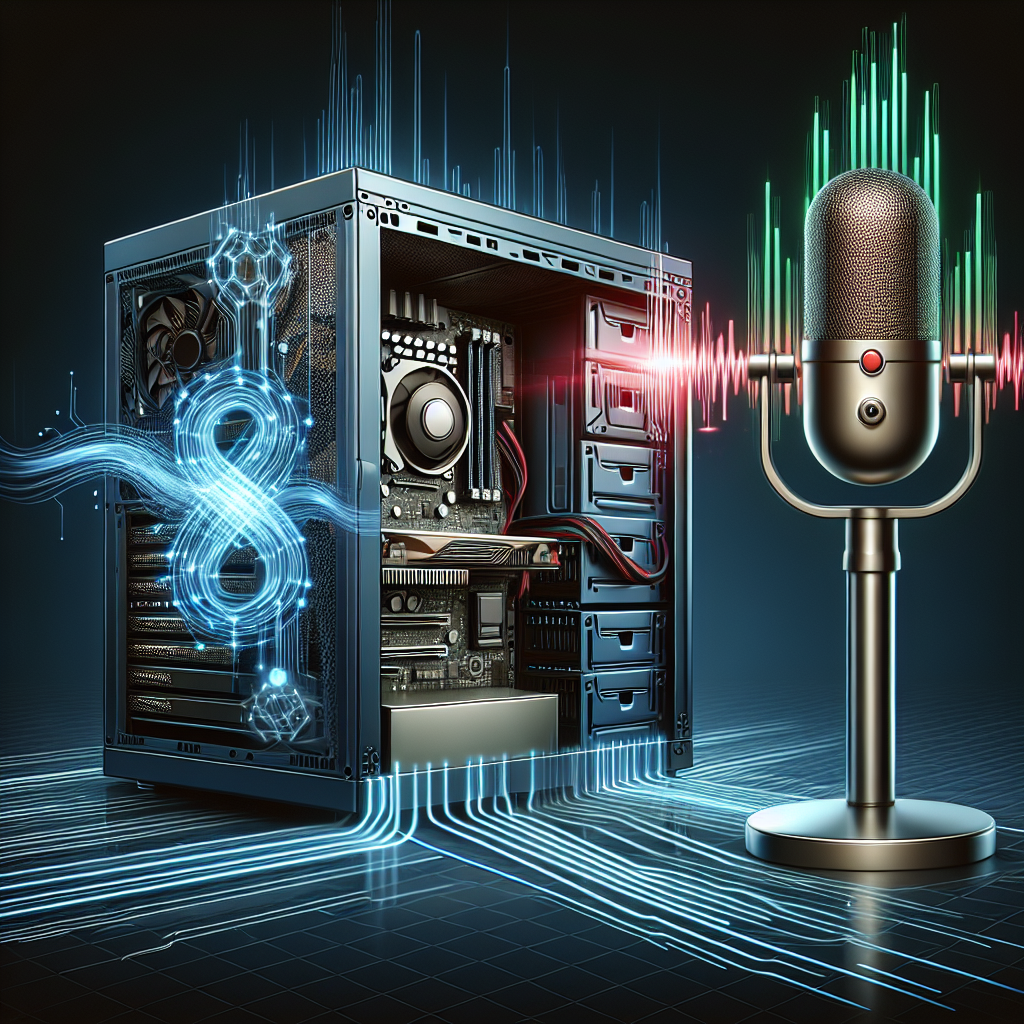In today\’s era of streaming, real-time voice modulation has become an indispensable tool for many gamers and content creators. This technology allows users to alter their voice in real-time, adding a layer of entertainment and engagement for their audiences. But how do gaming PCs handle this complex process seamlessly? Let\’s dive into the intricacies of real-time voice modulation, the technology behind it, and best practices to optimize performance.
Understanding Real-Time Voice Modulation
Real-time voice modulation transforms a person\’s voice into different pitches, tones, or effects instantaneously. This technology is crucial for streamers who wish to disguise their identity, entertain their audience, or add creative character voices during gameplay. The process involves several components that work in unison to ensure smooth and efficient voice modulation.
Components Involved in Voice Modulation
- Microphone: Captures the speaker\’s voice.
- Audio Interface/Sound Card: Converts analog signals to digital.
- Voice Modulation Software: Alters the voice in real-time.
- GPU and CPU: Processes the modulated voice to ensure minimal latency.
- Streaming Software: Outputs the modulated voice to the audience.
The Technology Behind Voice Modulation
Voice modulation involves various technologies and algorithms that work collectively to transform and process the voice in real-time.
Voice Capture and Conversion
The microphone captures the audio, which is then converted from an analog signal to a digital format by the sound card or an audio interface. High-quality microphones and sound cards ensure clear and accurate voice capture, which is essential for effective modulation.
Real-Time Processing
Once the voice is in digital format, voice modulation software takes over. Popular software like Voicemod, Clownfish, and MorphVOX use advanced algorithms to alter the pitch, tone, and add effects on the fly. These software applications leverage the CPU and GPU of a gaming PC to process the voice with minimal latency. The choice of CPU and GPU plays a critical role in determining the efficiency of real-time processing.
Popular Voice Modulation Software
| Software | Features | Compatibility |
|---|---|---|
| Voicemod | Real-time voice modulation, sound effects, custom voice creation | Windows, macOS |
| Clownfish | Voice changer, text-to-speech, sound player | Windows |
| MorphVOX | Voice changing, background sound effects, voice learning technology | Windows |
Importance of GPU and CPU
Modern GPUs and CPUs are integral to the smooth functioning of real-time voice modulation during streaming. Here\’s why:
- Speed: High clock speeds and multiple cores allow faster processing of the audio data.
- Parallel Processing: GPUs are designed for parallel processing, making them suitable for handling the complex computations involved in voice modulation.
- Reduced Latency: Efficient GPUs and CPUs minimize the delay between voice capture and output, ensuring real-time modulation.
Recommended Specifications
For optimal performance, it is recommended to use:
- CPU: Intel Core i5/i7 or AMD Ryzen 5/7 with high clock speeds.
- GPU: NVIDIA GeForce GTX 1060 or above, AMD Radeon RX 570 or above.
- Memory: At least 8GB of RAM for smooth multitasking.
- Sound Card: A dedicated sound card for better audio quality and processing.
Optimizing Performance During Streaming
To ensure smooth voice modulation and streaming, consider these best practices:
Hardware Optimization
- Upgrade to high-quality microphones and sound cards for clear voice capture.
- Use a dedicated streaming PC to offload processing tasks from the gaming PC.
- Ensure your GPU and CPU meet the recommended specifications.
Software Optimization
- Keep voice modulation and streaming software updated to benefit from the latest improvements.
- Configure the software settings according to your hardware capabilities to avoid overloading the system.
- Regularly monitor CPU and GPU usage to identify and address performance bottlenecks.
Network Optimization
- Use a wired internet connection to reduce latency and ensure stable streaming.
- Optimize network settings for streaming by prioritizing traffic related to voice and video data.
Conclusion
Real-time voice modulation is a fascinating and complex technology that requires a synergy of high-quality hardware and advanced software. Gaming PCs, with their robust CPUs and GPUs, are well-equipped to handle this process, ensuring minimal latency and high-quality output. By following the best practices outlined in this article, you can enhance your streaming experience and deliver engaging content to your audience.

